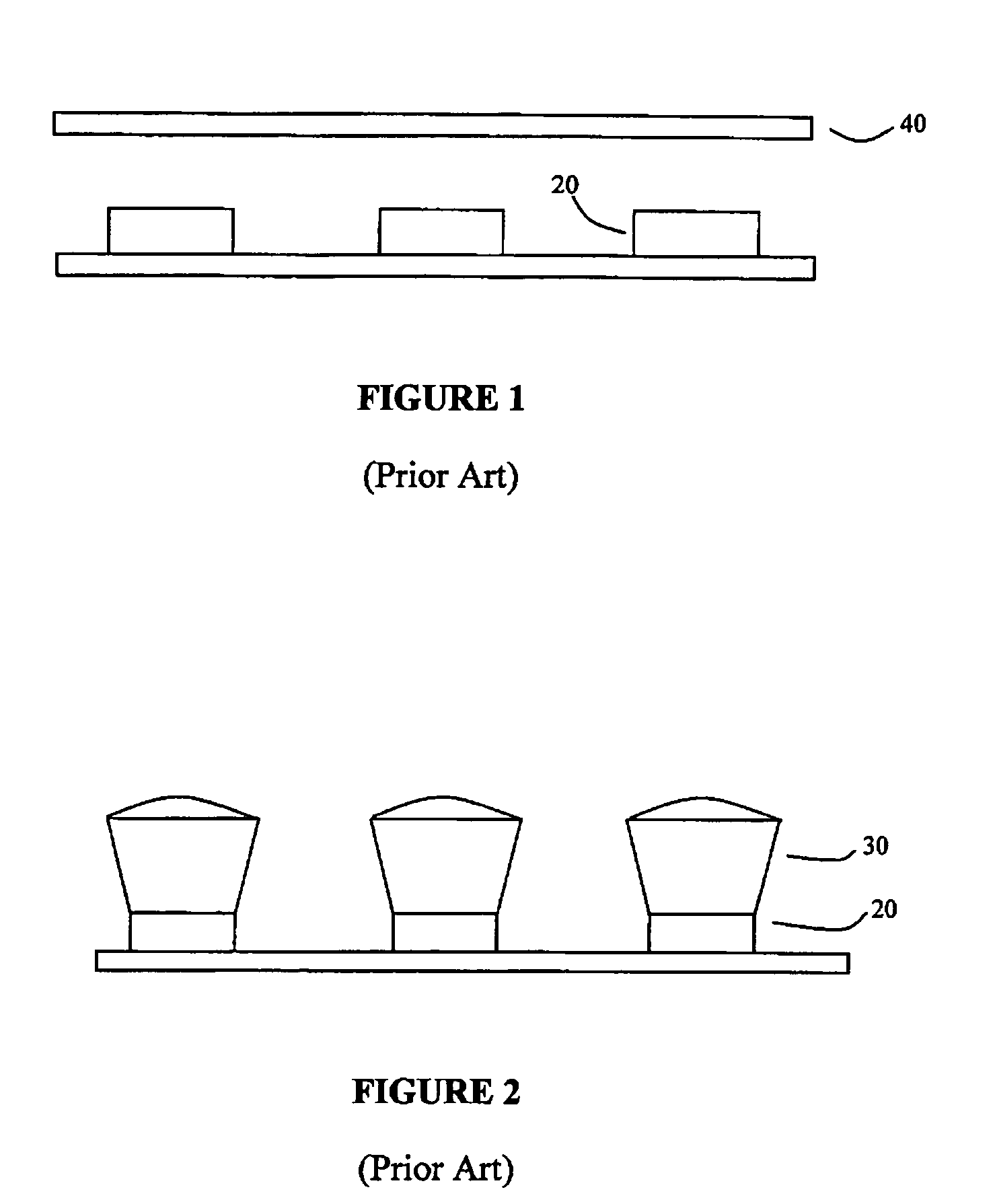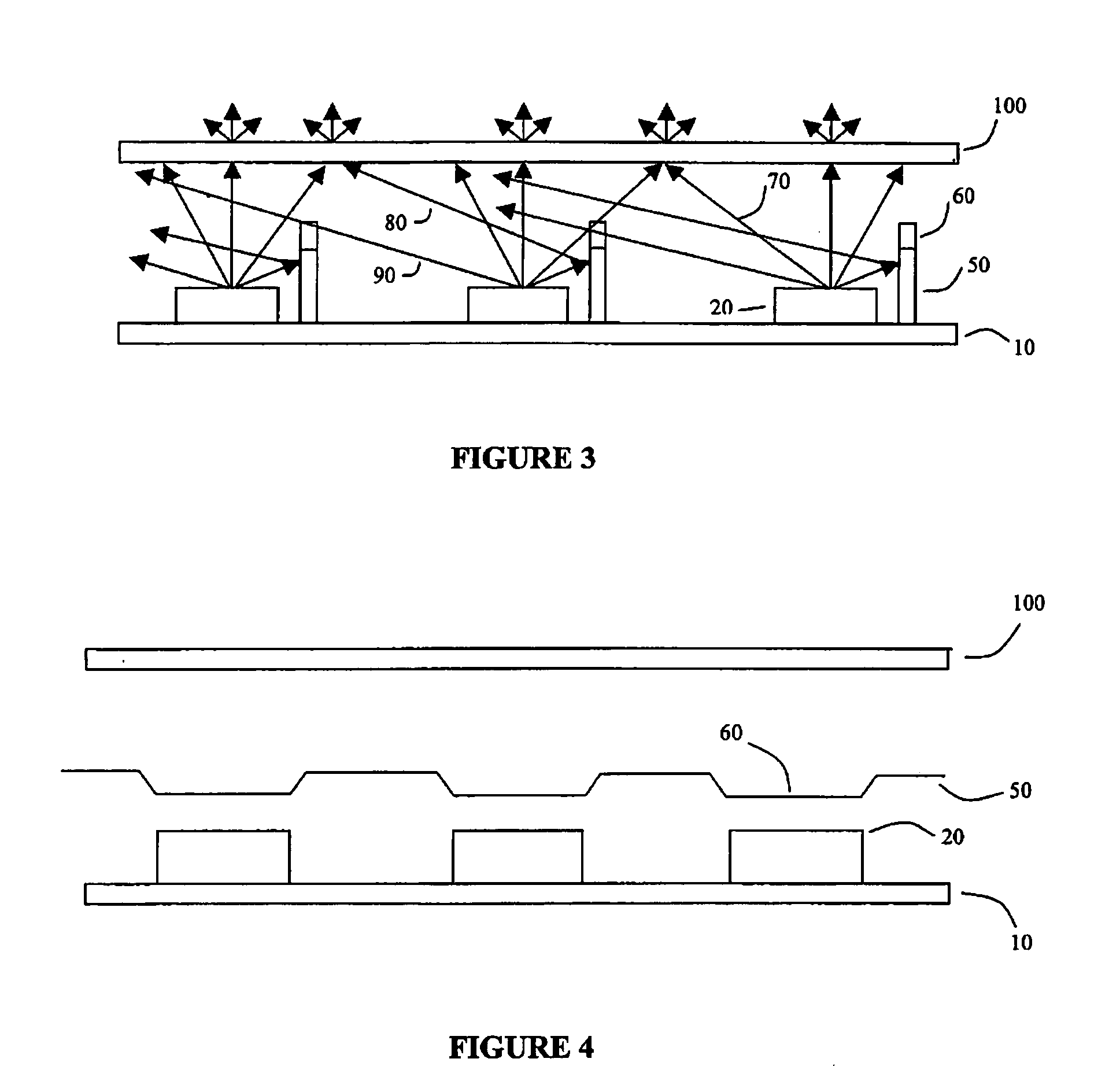System and method for manipulating illumination created by an array of light emitting devices
a technology of light emitting devices and arrays, applied in the field of optical systems, can solve the problems of large optics, large optics, and relatively high manufacturing cos
- Summary
- Abstract
- Description
- Claims
- Application Information
AI Technical Summary
Benefits of technology
Problems solved by technology
Method used
Image
Examples
example 1
Optical System for Predominantly Horizontal Distribution of Illumination
[0059]In one embodiment of the present invention, the illumination optical system is designed for a predominantly horizontal distribution of the illumination created by the light emitting devices. FIG. 9 illustrates three components of an optical system meeting this criterion, wherein the optical system comprises a two dimension array of light emitting devices 205 on collection of aligned linear printed circuit boards, 200, a macroscopic optical system 210 incorporating horizontal reflective optics 310 and a microscopic optical system 220 in the form of a diffuser. Cross sections A—A and B—B of the illumination optical system are illustrated in FIGS. 10 and 11, respectively. While the cross section is identified on the macroscopic optical system, the cross section illustrates a cross section of the three components together.
[0060]The macroscopic optical system that includes a plurality of horizontal planar refle...
example 2
Optical System for Predominantly Vertical Distribution of Illumination
[0062]In one embodiment of the present invention, the illumination optical system is designed for a predominantly vertical distribution of the illumination created by the light emitting devices. FIG. 13 illustrates three components of an optical system meeting this criteria, wherein the optical system comprises a two dimension array of light emitting devices 205 on collection of aligned linear printed circuit boards, 200, a macroscopic optical system 230 incorporating tilted and curved horizontal reflective optics 340 and vertical parabolic trough reflective optics 330, together with a microscopic optical system 240 in the form of a diffuser. Cross sections C—C and D—D of the illumination optical system are illustrated in FIGS. 14 and 15, respectively. While the cross section is identified on the macroscopic optical system, the cross section illustrates a cross section of the three components together.
[0063]The ma...
PUM
 Login to View More
Login to View More Abstract
Description
Claims
Application Information
 Login to View More
Login to View More - R&D
- Intellectual Property
- Life Sciences
- Materials
- Tech Scout
- Unparalleled Data Quality
- Higher Quality Content
- 60% Fewer Hallucinations
Browse by: Latest US Patents, China's latest patents, Technical Efficacy Thesaurus, Application Domain, Technology Topic, Popular Technical Reports.
© 2025 PatSnap. All rights reserved.Legal|Privacy policy|Modern Slavery Act Transparency Statement|Sitemap|About US| Contact US: help@patsnap.com



